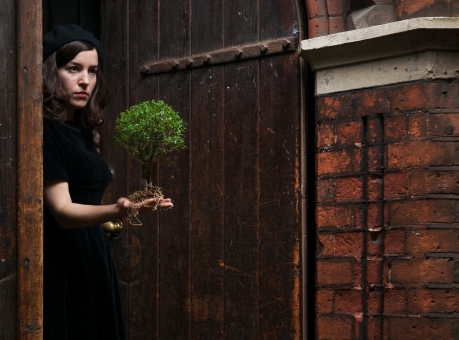Geraldine Pilgrim has been creating site-responsive performances and installations since long before Punchdrunk ever donned a mask or dreamthinkspeak first re-cast classic text into architectural form. Yet, for contemporary audiences, it’s hard not to encounter her work through the lenses of those other artists who have popularised the form in recent years. Pilgrim’s work rests on the classic tenets of site-specific working: the juxtaposition of crafted image with the unique qualities of a place; the shaping of contextual material – history, memory, cultural resonance – into performative forms.
TOYNBEE feels in many ways like a classic example of the form. The performance is partly an unfolding of the particular history of this progressive institution (Toynbee Hall, first established as a hub for wealthy university students to contextualise their learning within the social realities of the impoverished East End, before evolving into a centre leading many of the key battles fought by the oppressed in the twentieth century). Fragments of this fascinating history haunt the spaces we traverse – from glimpses of nineteenth-century juvenile court, to 1960s shop girls attending evening classes and a lavish Hindu wedding bringing to vivid life the sense of the building’s rich social and political legacies.
The architecture of the space itself provides the overarching theme, as we are guided from floor to floor, sometimes following a reverent Visitor whose intrigued wandering through the spaces gently mirrors our own role in the piece. Key moments in Toynbee Halls’ history are featured, including a fundraising gala in a compact lavish theatre where we shuffle before a frozen audience behind the cast of the Mikado, suspended in a moment.
Yet, though studded with moments of richness there’s a feeling of sparseness about the production for an audience acclimatised to immersive site-responsive performances, interactivity or compelling narratives to pull us through. Spanning both Toynbee Hall and Studios, the show is peopled by students and volunteers from a range of London drama and art schools, a model that maximises scale and effectively mirrors the building’s inclusive history to the show’s form, though with occasional compromise to the quality of the performance, especially challenging in this up-close-and-personal format. TOYNBEE is a co-commission with Spitalfields Winter Music festival, and the moments of live music – including a Victorian piano recital featuring an incredible dress-cum-tablecloth and a dutiful bit of soul singing accompanied by string quartet in a cramped corridor – felt like the fullest expressions of the show’s style.
This is a gentle gift of a site-specific performance, full of information and social histories increasingly relevant in a political environment ever more hostile to left-wing progressive thought. Pilgrim is perhaps a victim of her own success, in that her pioneering work in this form has been taken up and pushed on in new directions by others. The relevance of this show’s ideas feels somewhat masked by its reliance on some over-familiar tropes of a form which has moved on.

